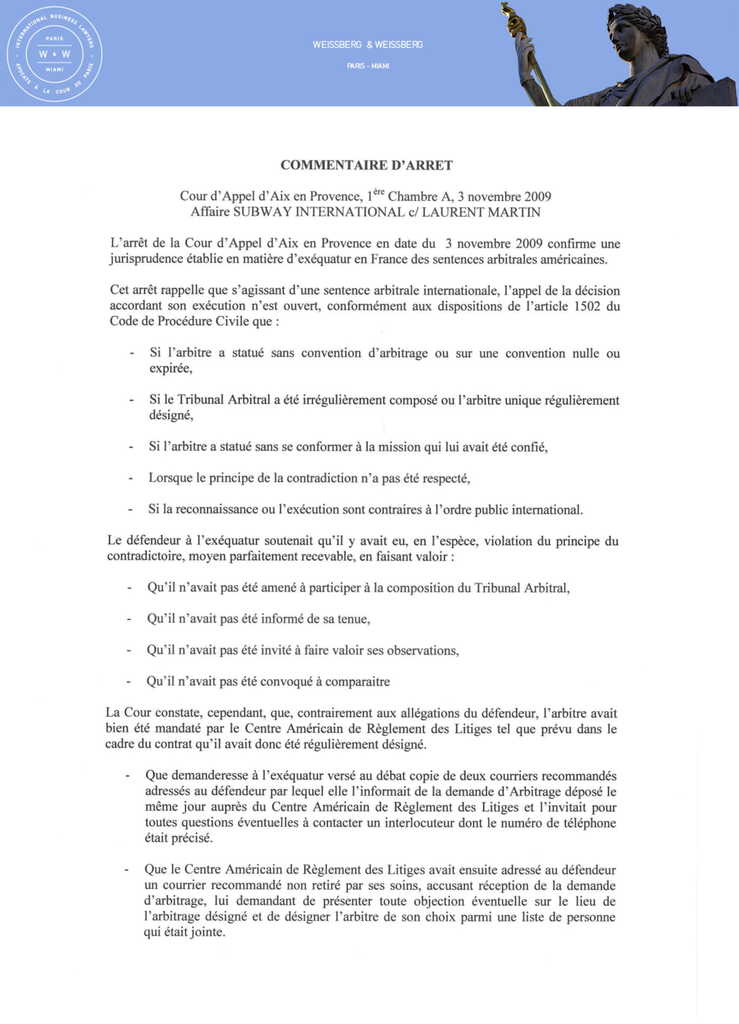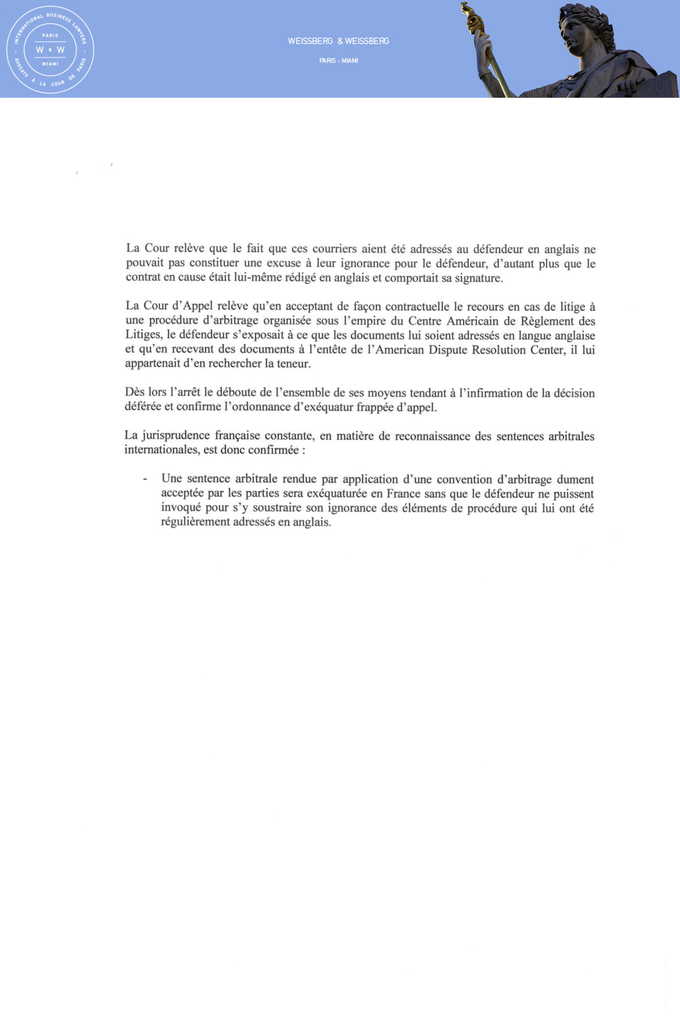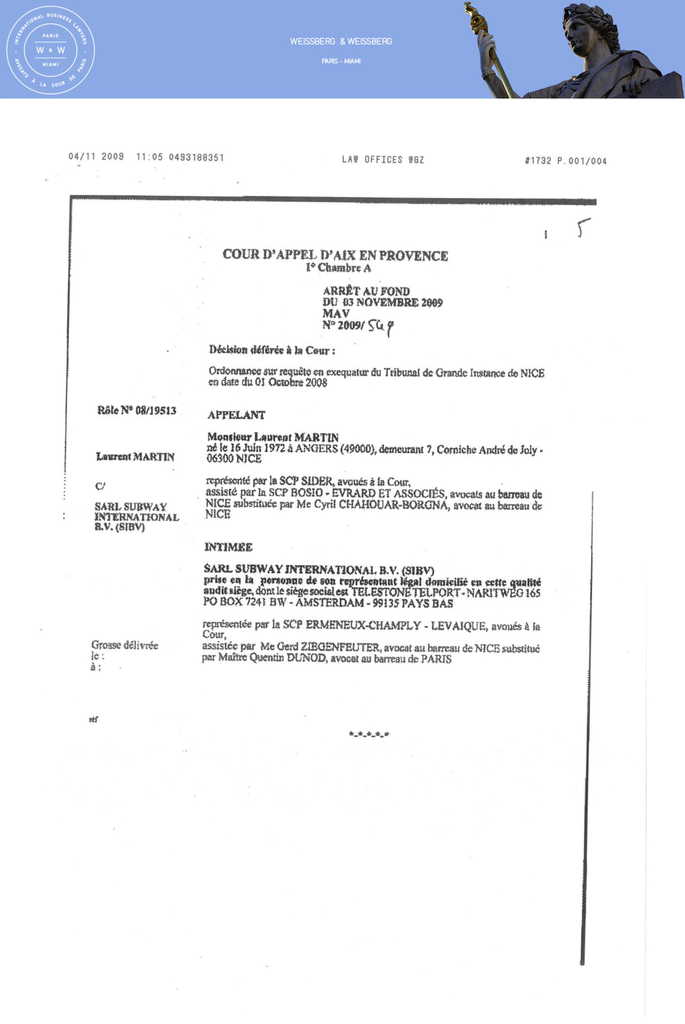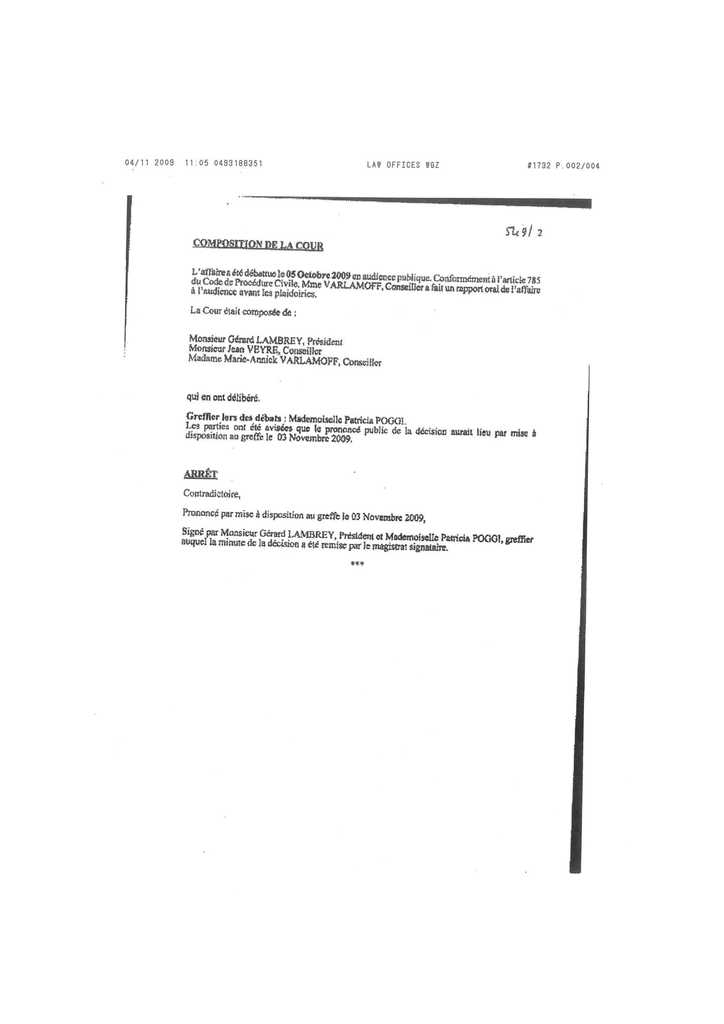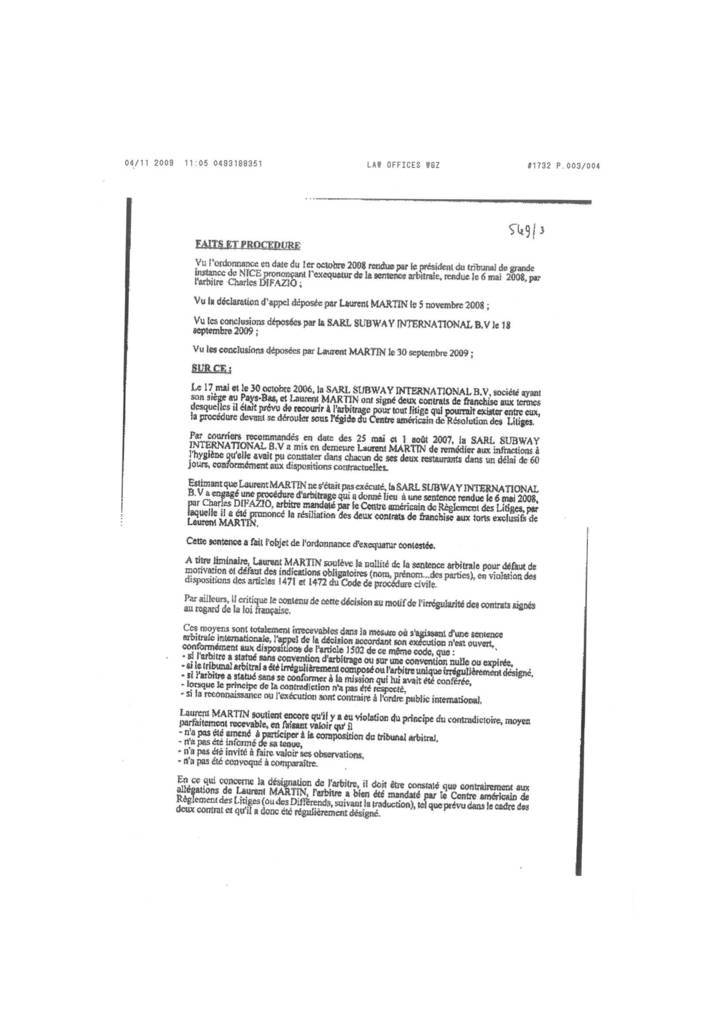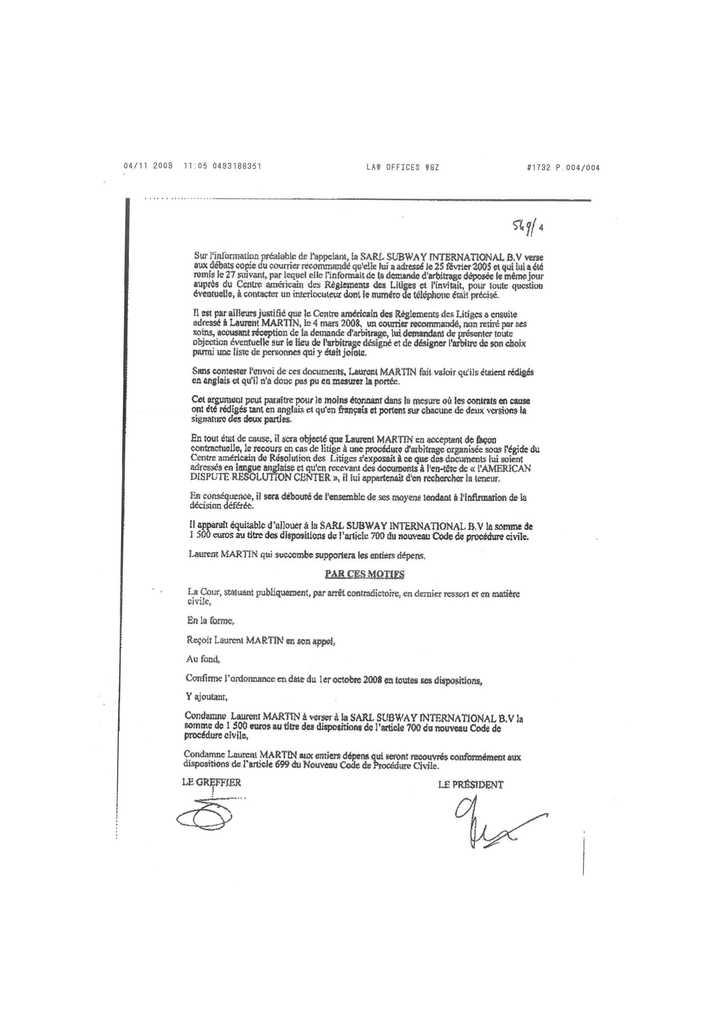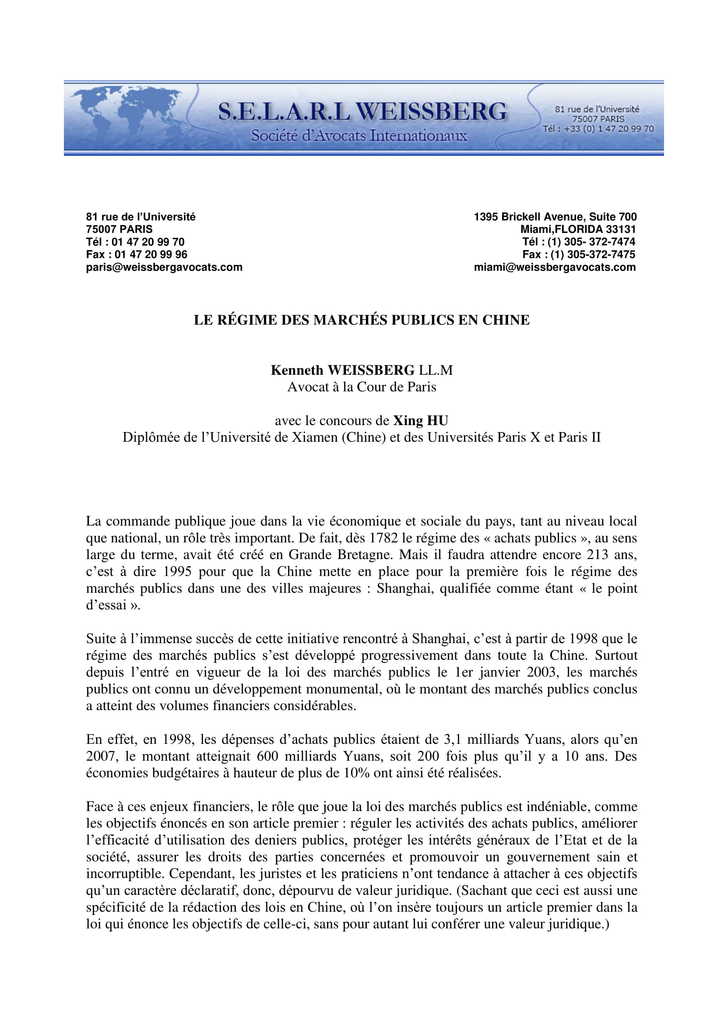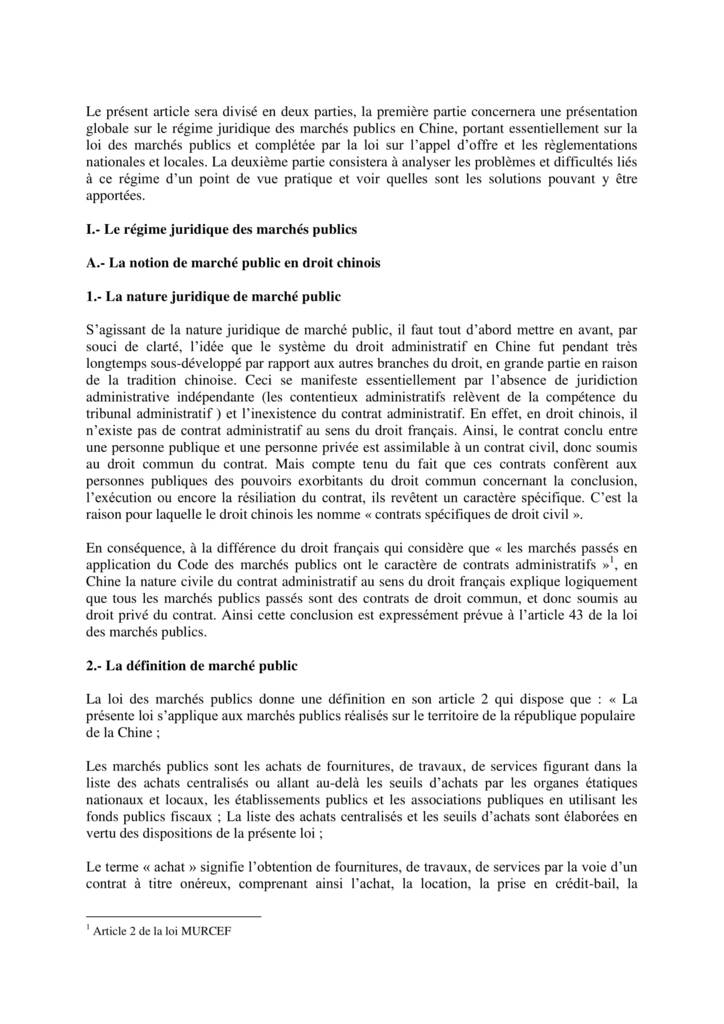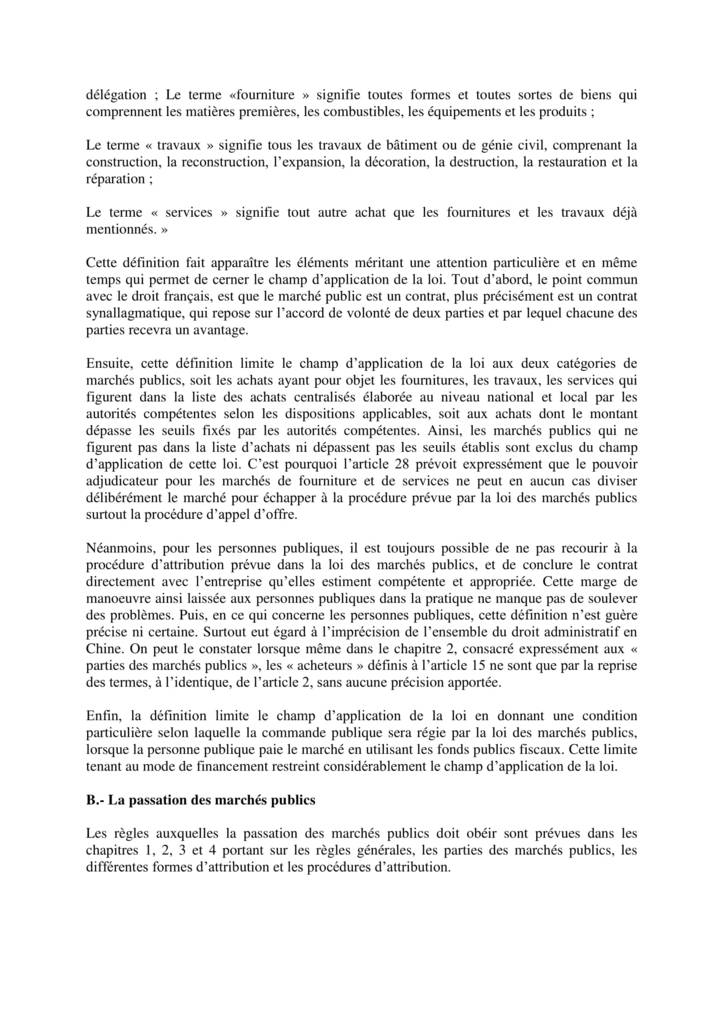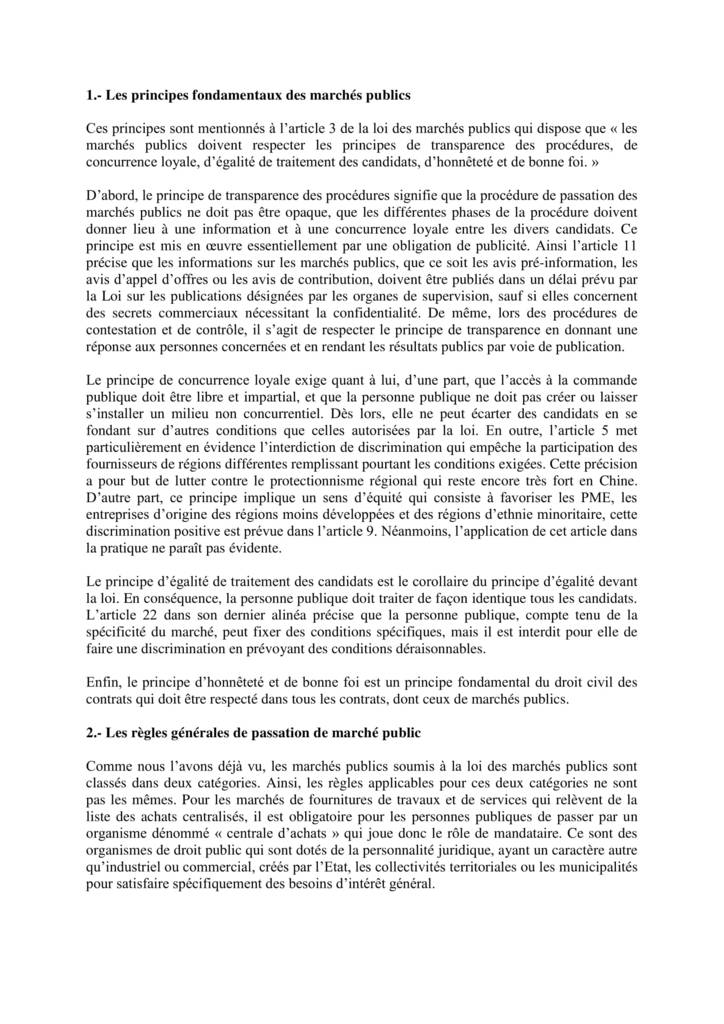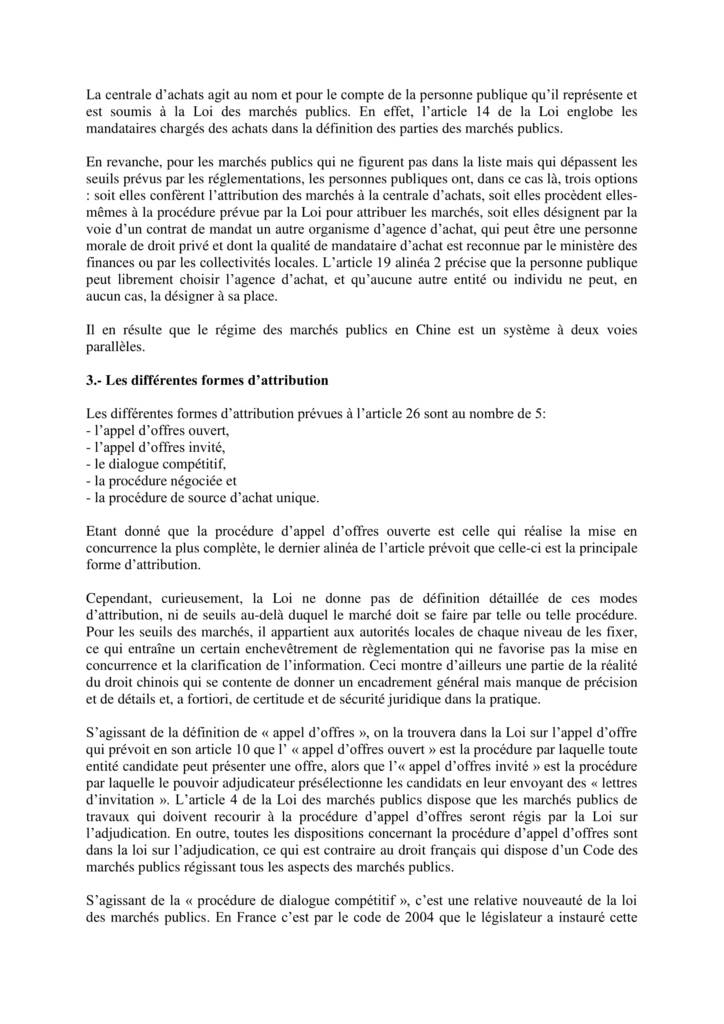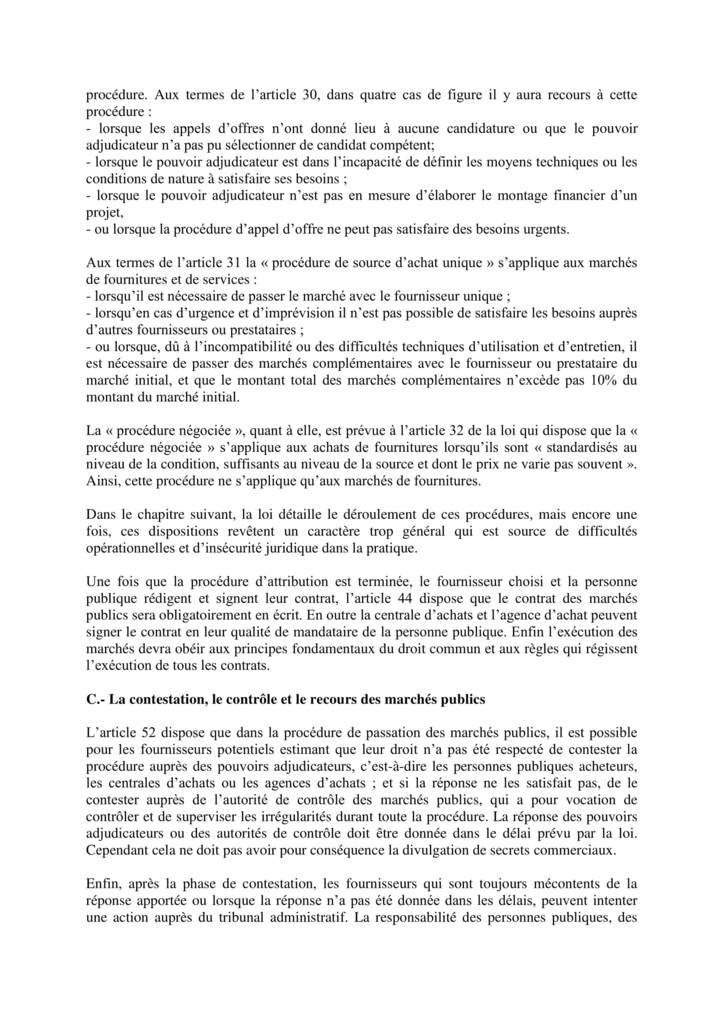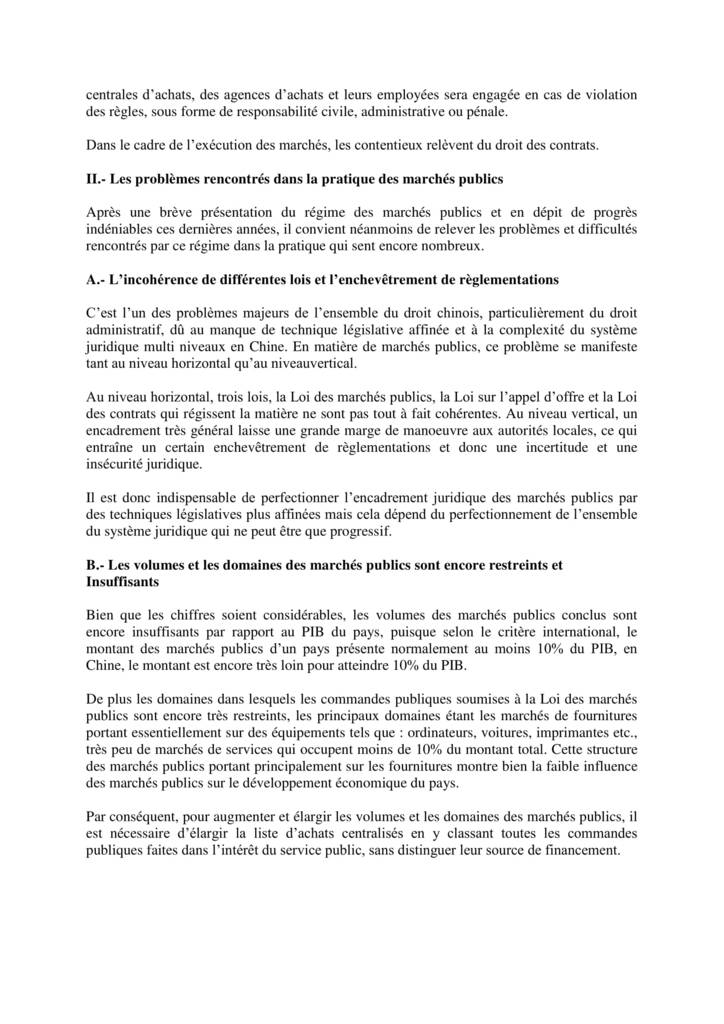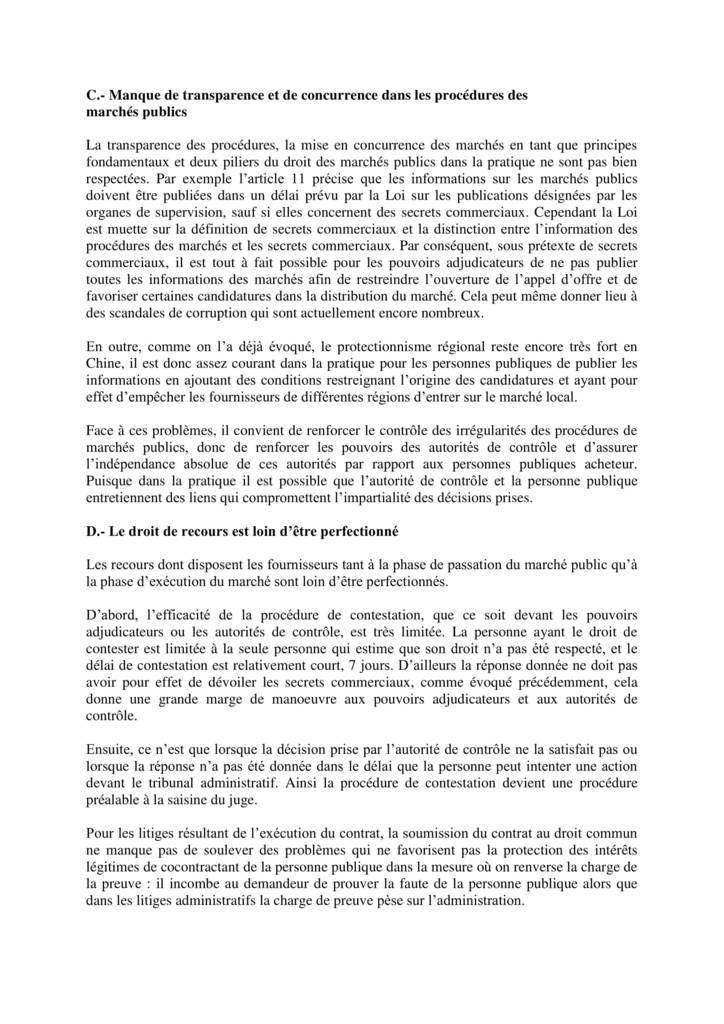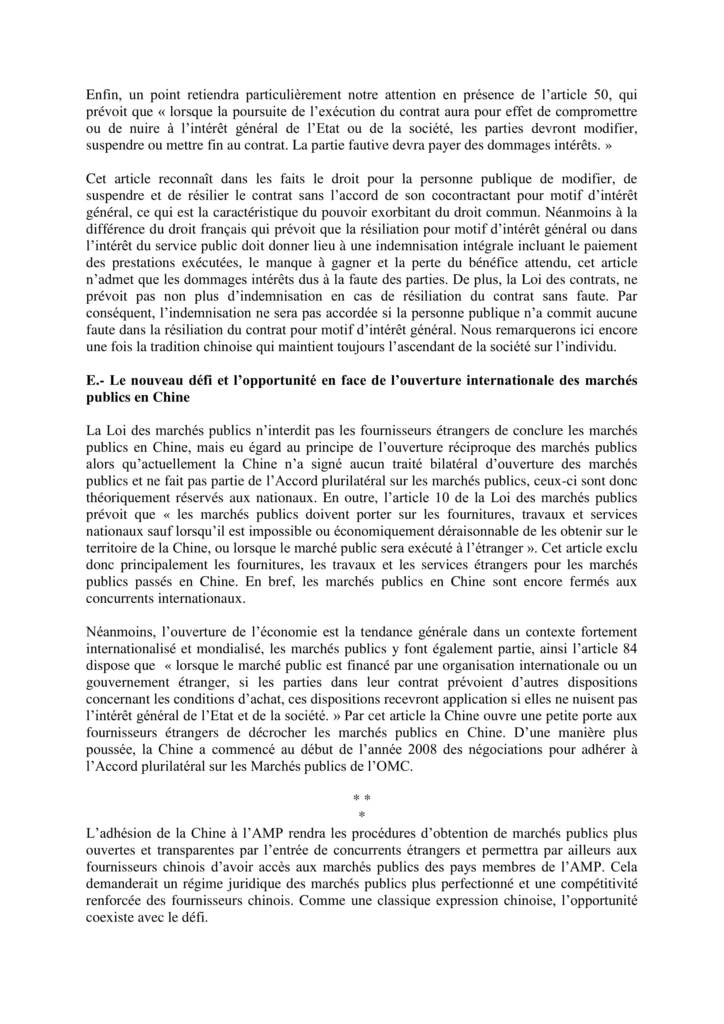Kenneth WEISSBERG, Lawyer at the Court of Paris; with the support of Xing HU, Graduated from Xiamen University (China) and Paris X and Paris II Universities
"The life and blood of international commerce" (1) is the term used by English courts to characterize documentary credit.
Documentary credit can be defined as "the operation by which a banker, intervening on the order of a buyer for the financial settlement of a commercial transaction, most often international, promises to pay the seller against delivery of documents" (2).
According to Dean Jean Stoufflet, the documentary credit technique is "the greatest success of international trade in terms of banking mechanism" (3).
Other authors have called it "a true masterpiece of banking technique" (4).
Indeed, in international affairs, due to the geographic distance of the contracting parties who often do not know each other and it is difficult for them to trust the first operation.
The exporter is hesitant to undertake the manufacture or delivery of a product if he is not sure of being paid. For its part, the importer is reluctant to pay funds to the exporter before being sure that the shipment has been completed within the prescribed time.
Documentary credit, by involving the independent and solvent intermediaries that are the banks, therefore constitutes a means of payment which has the advantage of reconciling the divergent interests of the buyer and the seller.
The seller is guaranteed to receive against delivery of certain documents, the price due to him due to the delivery of the goods within the agreed time.
The buyer, on the other hand, will only have to pay for the goods ordered if it has actually been sent to him.
As such, it can be considered that documentary credit is an instrument of confidence based on the international banking system.
Thus the myriad of commercial transactions and the development of international exchanges make documentary credit one of the most important instruments of international trade.
Consequently, the monumental development of international trade in China is necessarily accompanied by the development of documentary credit, we can even say that in China the use of documentary credit is an essential operation for carrying out commercial transactions with foreign partners. .
In the international business community, documentary credit has been the subject of
regulations issued by the International Chamber of Commerce (ICC), organization
international private sector which has developed uniform rules applicable by traders
coming from very different economic and legal systems. The effectiveness of these rules has been
demonstrated by practice and sanctioned by case law. These "Rules and Practices
Uniforms relating to Documentary Credits' (UCP) were published for the first time
in 19335. Regularly revised to monitor and support changes in practice,
their latest version the "RUU 600" replacing the previous version the RUU 500 dating
of 1993 entered into force on July 1, 2007. The UK as lex mercatoria receives
consequently its full application in China by recognizing the right of the parties to
choose the rule of law applicable in international transactions involving the use
documentary credit.
On the other hand, at the national level, it did not exist 4 years ago in China, as in many
other countries, including France, no legal or regulatory provision governing credit
documentary. Chinese state law which is intended to apply to supplement the
possible shortcomings of the UCP is constituted by the provisions contained in the Law on
General Principles of Civil Law, the Law on Contracts, the Law of Security Interests and the Law of
Civil Procedure. However, due to the fact that these provisions are generally very vague and are
therefore open to interpretation by the judge, and that case law is not a real
source of law in China, since 1995, disputes over documentary credits have been
extensively brought before the People's Court of China.
Until 2004, the Supreme Court of China has ruled on more than 100 cases, without
count hundreds of questions relating to documentary credits posed to the Court
Supreme by the lower courts. Thus, China Banking Regulatory Commission, banks
sales representatives also asked questions about the enforcement of court judgments
concerning documentary credits, given that legal explanations or
regulations emanating from the Supreme Court constitute one of the most important sources of law.
important in the Chinese legal system.
Having regard to these various questions raised in practice, particularly with regard to the law applicable to documentary credit, the criterion of document verification, fraud etc., the Supreme Court of China, after having made a global study and discussions with lawyers, practitioners, banks and CCI experts in China, drawing inspiration from the RUU500, adopted on October 24, 2005 the Rules of the Supreme Court on some questions concerning credit disputes documentary, which entered into force on January 1, 2006. Although the general provisions provided for in the aforementioned laws are still applicable, the Regulations provide judges and thus practitioners with more accuracy and precision in the event of diverging interpretations and also completes gaps under the UCP. However, this Regulation is not without faults, especially since the entry into force of RUU 600.
Regarding the scope of the Rules of the Supreme Court on some issues
concerning disputes relating to documentary credit, its first article provides that the
Rules apply to disputes relating to the issue, notification, modification,
revocation, negotiation and lifting of documentary credit. Here, the word "revocation"
means the application of the Regulations to revocable documentary credits. Expression
revocable credit means the documentary credit that can be amended or canceled by the bank
Issuer at any time and without agreement or information from the beneficiary 6.
However, in practice, revocable credits have disappeared for several years. Pulling
the lessons of this development, the UCP 600 no longer refer to the concept of credit
revocable. Drawn up under the control of UCP 500, the Regulation did not take into account this
evolution, which on the other hand gives the issuing or confirming bank the possibility
to attach the irrevocability of their commitment to pay conditions calling into question
the very principle of this commitment. These so-called "soft clauses" would have
consequence of making revocable documentary credits and therefore considerably harms
the interest of the beneficiary. Indeed, only the irrevocable credit is a real guarantee for the
beneficiary insofar as this type of credit constitutes a firm commitment by the banker
transmitter. The revocability of the documentary credit is contrary to the very principle of this
guarantee, consequently it would be preferable for the Regulation to delete in its field
the revocation of the documentary credit to be compatible with UCP 600 and
truly reflect business practice.
This article is limited to presenting two essential points of the documentary credit provided
by the Regulation which in practice give rise to more problems, namely the verification of
documents (I), and documentary credit fraud (II), as well as some thoughts on these
points under the rules of RUU600.
I.- Verification of documents
Document verification is an essential mission of the banker in the context of a documentary credit. As Mr. Affaki notes, "in an operation which is marked by the separation between the underlying commercial contract and the banking intervention, the outcome of this intervention is exclusively a function of documents and not of the realization of facts which may be reflected there ”(7). It is an important and growing source of litigation in the practice of documentary credit. This situation obviously affected the safety of the technique. It appeared that more than 70 % of the first presentations were irregular. Most of the difficulties relate to issues of document compliance. It is therefore one of the objects of the Regulation to minimize the risk of rejection for irregularity of documents.
A.- The criterion of verification
Section 5 of the Regulations provides that the issuing bank is required to honor its commitment to documentary credit when the documents presented are apparently in conformity with the terms of the credit, and all documents are apparently compatible with each other. It appears that the criterion of document verification in China is the criterion of strict compliance of documents with the stipulations of documentary credit. It is obvious that the banker cannot know all the commercial uses and consequently the beneficiary cannot ask him to consider as conforming documents which are not strictly identical to the stipulations of the credit.
Thus a bank does not have to interpret the description of a commodity, even when the
terms used in documents separate from those of the credit, for professionals of the
strictly equivalent trade. In a judgment of the Guansu Court of Appeal on June 25, 2007,
the Court supported the refusal of payment by the confirming bank, considering that the name
of the goods "grapes" stipulating on the invoice does not correspond to the name "dried
currents ”appearing in the documentary credit, although in international trade this
or almost the same goods. It should therefore be noted that the criterion of conformity
substantive was not upheld by the Chinese People's Court, which is contrary to the
jurisprudence of certain countries and in particular of the United States. Consequently, article 5 of
Regulation limits the obligation of the banker to a control of appearance of presentation
compliant. This is a protective rule for the banker in charge of verification who does not
benefit the recipient.
However, the principle of strict compliance has been strongly weakened by the Regulation, which
is also the case law trend, since Article 6 paragraph 2 specifies that in the case of
where the apparent conformity of the documents with the credit stipulations and the
inter-documentary compatibility are not strictly satisfied, since there is no
ambiguity or contradiction between them, the People's Court may consider that the
documents are compliant. Thus the Shanghai Court of Appeal overturned a decision having
excluded the responsibility of an issuing bank towards the beneficiary by qualifying as
a "purely formal" divergence which did not create any ambiguity in the fact that on a
transport document, the names of the recipient of the goods and the one to receive
notification of the arrival of this commodity, appeared in the wrong boxes and did not
not corresponding to the stipulation of the documentary credit.
From this point of view, the Regulation tries to maintain the balance between the interests of the banker
and the beneficiary while preserving the principle of strict compliance of documents by
in relation to the credit stipulations. Nevertheless, provisions of the Regulations drafted
very generally are susceptible to different interpretations, especially in relation to
RUU600 which provides detailed provisions by different types of documents. In
Consequently, these provisions do not give clear answers helping the courts to
rule.
B.- Consequences of non-conformity of documents
The regularization of rejected documents is always possible as long as the credit is not
expired and that the irregularities are subject to correction. On the other hand, when the
regularization of documents is not possible, Article 7 of the Regulations authorizes the bank
issuer, at its sole discretion, to request the agreement of the ordering party to accept
irregular documents.
However, the authorization to lift irregular documents given by the client
does not oblige the issuing banker to pay the loan to the beneficiary. When the transmitter has
refused the lifting of irregular documents, the payment request of the beneficiary who
prevails of the acceptance of irregularities by the principal, must be rejected by the court.
This is contrary to French case law, since in a judgment of March 11, 2003, the Paris Court of Appeal decided that the bank was obliged to pay in circumstances where the originator, meanwhile declared in receivership , had agreed to the payment of irregular documents. However, it should be remembered that the bank has no obligation to request from the originator any possible lifting of irregular documents even if the latter, without being questioned by the bank, intends to accept the documents. The formality of the documentary credit authorizes the banker, whatever the position of the principal on the execution of the basic contract, to refuse to honor his commitment since the documents presented in support of the request are not strictly meet the specifications of the letter of credit 8.
However, some Chinese lawyers consider that this article, authorizing the banker to refuse
irregular documents, even with the agreement of the principal, resulting in
to the interests of the principal and the beneficiary, and considerably increase the cost of
international transactions with full emphasis on the principle of credit autonomy
documentary. This article does not take into account the purpose of document credit, which is to ensure the
payment of the commercial transaction of which the good progress and the good result, goal
pursued by the parties, namely the ordering party and the beneficiary of the documentary credit.
II.- Documentary credit fraud
Fraud is the only exception that can hinder the free play of documentary credit mechanisms. In particular, it hinders the payment of documents which appear to be regular (9). Although the maxim fraus omnia corrumpit is generally accepted by all legal systems, in the area of documentary credit, the qualification of fraud and its taking into account are highly variable (10). Given the differences in fraud between the different legal systems, the RUU600 deliberately leaves the problem to national law.
On this issue which generates as much difficulty as the verification of documents
in practice both for the banker and for the Court, the Regulation therefore clarifies the
qualification of documentary credit fraud and its effect on bankers, the
principal and beneficiary. However, this qualification is questionable, according to many
lawyers and practitioners, because its scope considered too broad.
A.- The broad scope of the qualification of fraud
Article 8 provides that fraud is established when the beneficiary:
- counterfeits or falsifies documents or presents documents which it knew to be false from the outset;
- in bad faith does not deliver the goods or delivers the goods devoid of any value;
- presents false documents without any real transaction with the collusion of the principal or a third party;
- or by other frauds concerning documentary credit.
Under this article, it is interesting to note that by listing the cases of fraud, it does not give its definition or characteristics, which suggests that the article applies to all frauds. provided for in these four cases, contrary to American or French case law which requires that fraud be substantial or manifest.
This would have the effect of widening the scope of the fraud exception principle and
lead to even more refusal of payment by the banker who could easily invoke
fraud, and consequently compromise the efficiency and speed of documentary credit.
Regarding the first and third scenario, that is to say the beneficiary infringed or
falsified documents or presented documents that he knew were false as soon as
the origin; and the beneficiary, with the collusion of the principal or a third party, presenting
false documents without any real transaction, we can see that these are the most
more common in practice, and relatively easy to establish.
However, what raises the most problem is the second scenario in which the
beneficiary in bad faith does not deliver the goods or delivers the goods
devoid of any value. Here, the border between the poor execution of a contract
commercial and fraud could raise difficulties of appreciation. A fortiori, the
bad faith on the part of the beneficiary is sometimes difficult to demonstrate. In a judgment of the Court of Appeal
of Tianjing on November 28, 2006, the Court found the issuing bank liable
citing fraud in the circumstances in which the seller issued, instead of a certain
dry medicinal plant, the fresh medicinal plant which has rotten during transport from
China in Korea, on the grounds that the fresh plant fully met the stipulation of
documentary credit that did not specify the condition should be this plant.
It should be noted, however, that in this case, the bad faith of the seller could have been
established from the fact that the fresh plant has practically no medicinal effect, and the
recipient should have anticipated the possible rotting during the long transport.
As for the last paragraph, it groups together all the other frauds not provided for by the
three cases, which leaves a wide margin of appreciation to the courts. It shows
that the acts which could be qualified as fraud do not appear to be clearly defined by the
Regulation and therefore the application of the fraud exception principle raises
often many difficulties, legal uncertainty remaining.
B.- The effect of fraud
Article 9 of the Regulations provides that the fraud provided for in Article 8 authorizes bankers
and the principal to request the Court to suspend payment of the credit
documentary. Thus, it deprives the beneficiary of his rights under the documentary credit and
exonerates the responsibility of the banker, whether it is an issuing bank,
confirming, nominated or negotiator.
Article 10 also specifies that once fraud has been noted by the Court, it must order the suspension or cessation of payment of the documentary credit, except in the following cases when:
- the bank designated in good faith carried out the documentary credit by executing the instruction of the issuing bank;
- the issuing bank or its bank designated in good faith has accepted the documents;
- the bank confirming in good faith has honored its commitment or
- the good faith negotiating bank negotiated the documentary credit.
It is therefore considered that the issuing or confirming banker is required to reimburse the bank
intermediary authorized to carry out the documentary credit if this bank has regularly
carried out, before the discovery of the fraud, the credit in view of apparently compliant documents
the stipulations of the documentary credit.
The fraud therefore opens recourse to the banker who paid the documentary credit and
this, even if the banker committed a fault in the verification of the documents and paid the
documentary credit without any reserve since it has not discovered the fraud before
payment and was thus in good faith. However, what is very regrettable is that the text does not
not provide for the cases of documentary credits payable in the future where the intermediary bank
had paid the beneficiary in advance of the date agreed for the completion of the
documentary credit. It should therefore be added to this text that the banker who anticipates the
realization of the documentary credit does so at its own risk.
In the same vein, the principal will have to reimburse the issuing banker who has
lifted "false" documents when there was nothing to suspect their authenticity. Se
asks the question of knowing when the principal is availing himself of a fraud affecting the
documents of a documentary credit in order to paralyze the payment by the bank:
does the bank have an obligation to refuse payment? The Rules do not give us an answer,
court decisions are divided on this point.
***
The Rules of the Supreme Court on certain questions concerning disputes relating to the
documentary credit undoubtedly provides the courts with more precision and certainty
to rule on disputes relating to documentary credits. Nevertheless, we must admit
that it is far from complete and that the UCP in its current version still remains a source
very important law for Chinese courts, and important case law
foreigners also have considerable influence.
(1) Harbottle RD (Mercantile) Ltd. V. National Westminster Bank Ltd., (1978) QB 146, (1977), 2 All. ER862.3 WLR752.
(2) Ch. Gavalda and J. Stoufflet, Banking law: Litec 2005, 6th ed., P. 403.
(3) J. Stoufflet, Documentary credit: Litec 1957.
(4) J.-P. Mattout, International banking law: Bank 2004, 3rd ed., P. 259.
(5) J. Stoufflet, The normative work of the International Chamber of Commerce in the banking field, in Studies offered to Berthold Goldman: Litec, 1987, p. 364 and s.
(6) RUU 500, art. 8
(7) G. Affaki, op. cit., n ° 139.
(8) G. Affaki and J. Stoufflet: Banque et Droit, 2004, n ° 95, P62, obs.
(9) Cass.com. March 4, 1953, S. 1954-1-121, Lescot note
(10) M. Vasseur, notes Cass.com. April 7, 1987, DS 1987, p399
